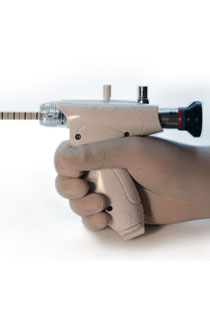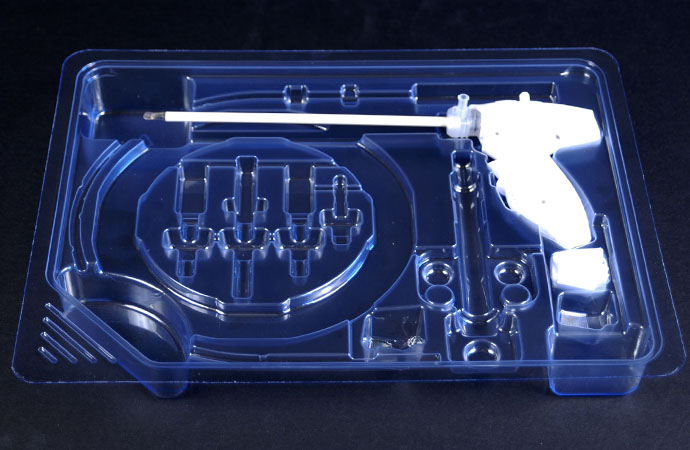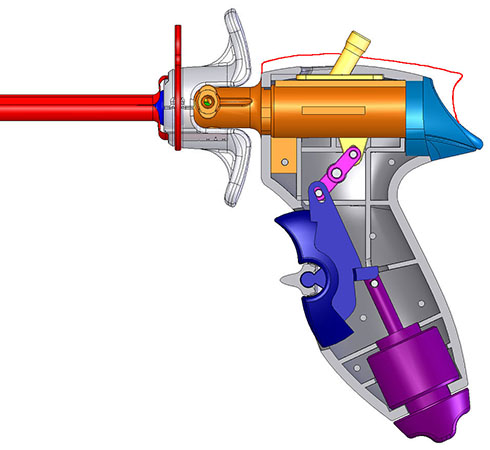



This project focused on designing a handheld medical device specifically for the precise injection of therapeutic drugs into the prostate. The device was engineered to be compatible with a range of rigid cystoscopes commonly used in urology, ensuring seamless integration into existing procedural workflows. At the core of the design is a curved needle system that enables targeted delivery of medication into prostate tissue, improving treatment accuracy and patient outcomes.
To support the demands of this delicate procedure, the team developed a compact, ergonomic handle that provides smooth articulation and responsive control during needle deployment. A built-in safety lockout feature was incorporated to prevent accidental needle advancement, enhancing procedural safety. Each internal component was carefully engineered to fit together cohesively, delivering consistent performance and tactile feedback. Clinician feedback during testing was overwhelmingly positive, with users expressing high confidence in the device’s precision, usability, and safety in real clinical environments.
The research and planning phase began with in-depth contextual inquiry involving urologists, nurses, and clinical technicians to understand the challenges of drug delivery to the prostate using existing tools. The team observed procedures in surgical suites and outpatient settings, noting the need for a more controlled, ergonomic method of injection that minimized both user strain and patient risk. Specific focus was given to how clinicians navigated the anatomy with rigid cystoscopes, and how needle deployment was currently managed in constrained spaces.
The team conducted competitive audits of existing urology tools and consulted with biomedical engineers to assess mechanical tolerances, articulation mechanics, and fluid control. Early user studies revealed a lack of tactile feedback and control in current delivery methods, leading to uncertainty during injections. These insights informed the need for a curved needle design to reach target sites within the prostate, paired with a handle that could deliver both intuitive actuation and firm safety features.
Multiple rounds of sketching, mockups, and ergonomic models were used to test handle concepts, safety lockout designs, and interface alignment with cystoscopes. Usability testing with simulated tissue models and clinician input drove refinements in grip contour, trigger force, and needle control dynamics, ensuring that the final design would feel like a natural extension of the clinician’s hand.